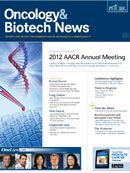Close Call for Cost-Effectiveness of Bevacizumab in Ovarian Cancer
Recent clinical and economic studies have suggested that ovarian cancer regimens containing bevacizumab could fall within the boundaries of cost-effectiveness, at least for some patients.
John Chan, MD
Recent clinical and economic studies have suggested that ovarian cancer regimens containing bevacizumab (Avastin) could fall within the boundaries of cost-effectiveness, at least for some patients, according to an analysis of recent trends and data.1
Combining an 8-month improvement in overall survival (OS) with a 50% reduction in the bevacizumab dose and a briefer maintenance period yielded an incremental cost-effectiveness ratio (ICER) of $167,771. The figure, which did not take quality of life into consideration, approaches the emerging standard for cost-effectiveness that currently tops out at about $150,000.
“Our analysis has an economic model of comparative effectiveness based on data from a recent prospective, randomized trial,” John Chan, MD, director of Gynecologic Oncology at the University of California, San Francisco, Helen Diller Comprehensive Cancer Center, said at the 2012 SGO Annual Meeting. “Additionally, a lower dose of bevacizumab has been found to be effective in other tumor types.”
Other factors would have to fall the right way to achieve cost-effectiveness for a bevacizumab-containing regimen. A willingness-to-pay analysis showed that about half of the patients could be treated cost-effectively at a threshold of $170,000.
Recent studies have suggested that an ICER of $100,000 to $150,000 is the new accepted standard for cost-effectiveness, putting the $167,771 estimated cost of the bevacizumab-containing therapy within reach of cost-effectiveness, said Chan.
The model relied heavily on a subset of patients from the large European ICON7 study,2 which evaluated standard chemotherapy alone or chemotherapy plus bevacizumab followed by 12 cycles of bevacizumab maintenance therapy in women with newly diagnosed ovarian cancer. The protocol employed a bevacizumab dose that was half the usual dose given in the United States (7.5 vs 15 mg/kg).
Overall, the results showed a modest but statistically significant improvement in progression-free survival (PFS). About 30% of the 1528 women in the trial had a high risk of progressive disease. In that subgroup, women randomized to bevacizumab had an 8-month improvement in median OS (28.8 vs 36.6 months).
In the United States, the Gynecologic Oncology Group conducted a trial (GOG 218) similar to ICON7.3 Investigators randomized 1873 patients with newly diagnosed ovarian cancer to standard chemotherapy with paclitaxel and carboplatin, to the same chemotherapy plus concurrent bevacizumab, or to chemotherapy plus concurrent bevacizumab and bevacizumab maintenance therapy. GOG 218 used a bevacizumab dose of 15 mg/kg for upfront and maintenance therapy, and maintenance continued for a maximum of 22 cycles, as compared with 12 cycles in ICON7.
The primary result of GOG 218 was a 29% reduction in the hazard ratio for progression or death in the group that received concurrent and maintenance bevacizumab versus chemotherapy alone (P <.0001). Upfront bevacizumab without maintenance therapy did not significantly improve PFS.
A cost-effectiveness analysis of GOG 218 showed that the addition of bevacizumab to chemotherapy far exceeded currently accepted standards of cost-effectiveness.4 In the group that received concurrent and maintenance bevacizumab, the ICER per progression-free life-year saved was $401,088.
To see whether bevacizumab might be cost-effective for selected patients with ovarian cancer, Chan ran the numbers for a model that targeted the high-risk subgroup from ICON7, employed the 7.5 mg/kg bevacizumab dose, and shortened the duration of bevacizumab maintenance therapy.
“If bevacizumab is not cost-effective in this setting, it probably will never be cost-effective, unless the drug costs are lowered extensively,” explained Chan. Using data from his own institution’s pharmacy and from Medicare, he estimated the cost per 10 mg of drug would be $57.57 for bevacizumab, $4.20 for paclitaxel, and $3.82 for carboplatin. The model also accounted for complications, PFS, and OS.
The calculations showed that a cycle of chemotherapy alone would cost $535. Adding concurrent bevacizumab to chemotherapy would increase the per-cycle cost to $3760, and bevacizumab maintenance therapy would cost $3225 per cycle. The model assumed identical rates of severe complications for chemotherapy alone and chemotherapy plus low-dose bevacizumab, each complication adding $2000 to the cost of treatment. Finally, the model based its calculations on PFS and survival data from ICON7 for the high-risk subgroup.
The model produced the ICER of $167,771 for adding concurrent and maintenance bevacizumab to standard chemotherapy. Given the evolving economic standards and considerations, a cost-effective bevacizumab regimen might be possible.
“A lower dose of bevacizumab may be cost-effective in selected patients with an overall survival benefit,” said Chan. “Further studies are warranted to assess patient and payer perspectives on willingness and ability to cover costs.”
References
- Chan J, Herzog T, Hu L, et al. A cost effective strategy of bevacizumab in treatment of primary ovarian cancer — A subset analysis of ICON 7 trial. Presented at the 43rd Annual Meeting of the Society of Gynecologic Oncology; March 24-27, 2012; Austin, TX. Gynecol Oncol. 2012;125(suppl):S1-S188. Abstract 39.
- Perren TJ, Swart AM, Pfisterer J, et al, for the ICON7 Investigators. A phase 3 trial of bevacizumab in ovarian cancer. N Engl J Med. 2011;365:2484-2496.
- Burger RA, Brady MF, Bookman MA, et al, for the Gynecologic Oncology Group. Incorporation of bevacizumab in the primary treatment of ovarian cancer. N Engl J Med. 2011;365:2473-2483.
- Cohn DE, Kim KH, Resnick KE, et al. At what cost does a potential survival advantage of bevacizumab make sense for the primary treatment of ovarian cancer? A cost-effectiveness analysis [published online ahead of print March 7, 2011]. J Clin Oncol. 2011;29(10):1247-1251.




